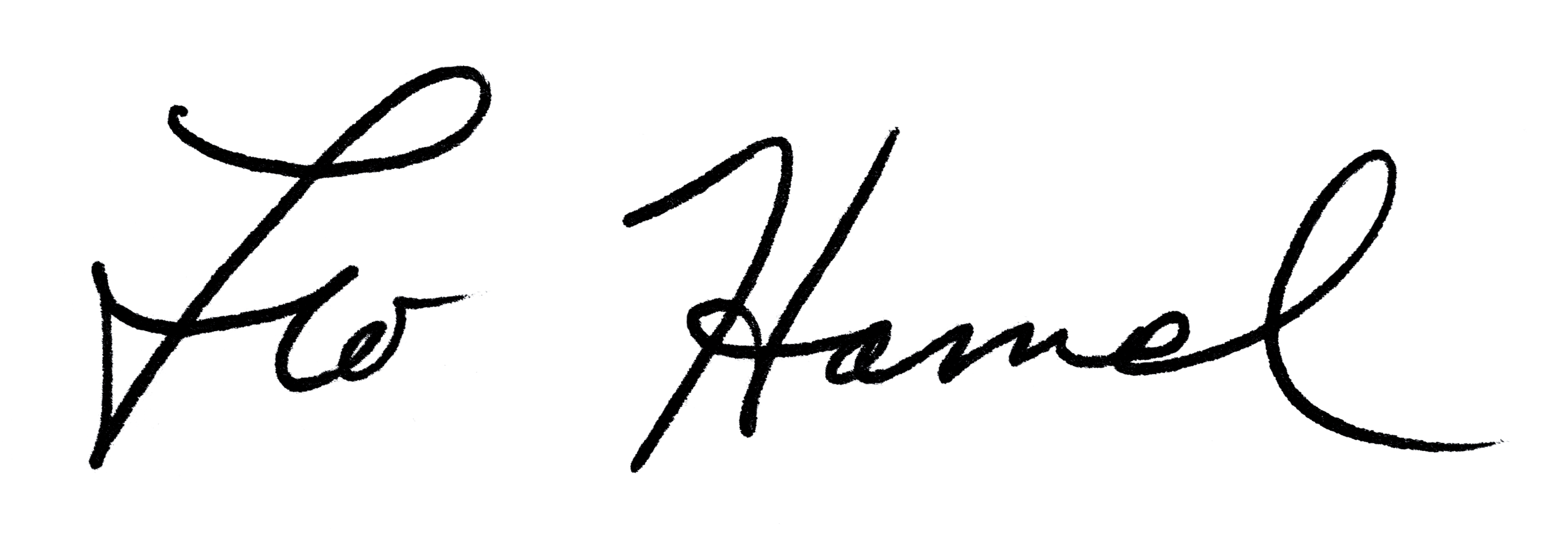
Leo Hamel Fine Jewelers Policy Letter
Letters/Emails and Form Letters/Emails
The biggest difference between Leo Hamel Fine Jewelers and other jewelry stores is that we are in better communication with our customers. From recent surveys, what our customers like most about shopping at Leo’s is the “personalized one-on-one service.”
Definitions:
Form Letter: The same letter or email sent to a group of people with no variation or deviation except the person’s name.
Letter: A real, personal letter or email written from one of our employees to one of our customers, potential customers, or vendors. A letter or email includes a personal communication from our employee to the outside person. The key difference is real letters and emails say something personal from one person to another.
The four points of writing letters/sending emails:
- NEVER SEND OUT A FORM LETTER OR EMAIL: Never use form letters or form emails for anything. Not for repairs, sales, refinishes or even custom work. Not for any reason.Each customer is different and should be communicated to as an individual and the letter or email should come from you as an individual. Form letters and emails go from a computer to a name on a list. Real letters and emails are the appropriate communication from you to the actual person.
A form letter or email has little or no communication value and is directed to a name and not an individual. A form letter or email would only count in the “bulk mail” statistic, not as a (real) “contact.” We have experienced over years of testing that the store’s income is in direct proportion to the number of phone calls, real letters, and real emails that we put out. Real letters and real emails, not form letters or form emails, give us the result.
There are times when part of a letter or email could be repeated over and over for each customer. But even if you use part of a letter or email in more than one letter, you MUST personalize the letter or email to that person. It doesn’t count to only change the name in “Dear John.”
Example: You are sending out letters to referrals. You don’t know anything about these people so you might send the same letter to each. This is not personal so it would not count as a letter. But if you personalize it by saying, “Bill Smith referred you to our store and I wanted to find out what your interests are,” then the next few lines may be from a “form letter” but at least you have personalized it with the reference to Bill.
The more personalized your letter, the better the result. An example would be a referral that lives in La Jolla to whom you could write, “Bill referred you to me. They said you might be looking for a fine Swiss watch one of these days. Since you live on the coast, a dive watch might be best option…” This will feel like a real communication to the customer.
Another example is when you are sending emails promoting for a watch show. Part of the email is going to be the same to each person, “We are having the Rolex show on June 12…” But you can personalize it with something from their file such as, “How are you enjoying the IWC watch that you bought last year? Is it time to add to your collection with an Ulysse Nardin watch?”
So, it would be okay to use parts of a “saved letter” or “saved email” but the letter or email must be personalized so that it feels like and is a real letter or email to that specific customer.
In this modern “computer-generated world” of ours, there are three other points to note.
- REAL STAMPS: Always use real stamps on personal letters, cards and thank you cards. ALWAYS! Do not use bulk mail or postage meter. Use the brightest and most festive stamps available. The Post Office always has one stamp that is their “common” one (this changes) but they also always have others commemorating events, people, places and holidays. These add a special touch and make your mail stand out from the tons of mail that your customers get each day.
- HAND-WRITTEN: If a letter is important and you really want them to know it is “personal” then hand-write the letter instead of printing it. Or use an LHFJ card which is hand-written.
- HAND-ADDRESSED: All of our letters to customers are hand-addressed. Note that the Post Office uses a computer to scan the zip code. If the zip code is illegible, the mail may be returned or simply not delivered. Always print the address clearly and cleanly, especially the zip code. Use an ink pen, not a felt-tip pen or magic marker that can smear.
CONSEQUENCES
Because it is so important to our relationship with our customers that we send real emails and letters and not form emails and letters, there must be some penalty attached to disregarding this policy. Therefore, effective immediately, anyone who is found to have sent a form email or letter to a customer will be placed on a program of 50% commission reduction for a period of 6 months.
